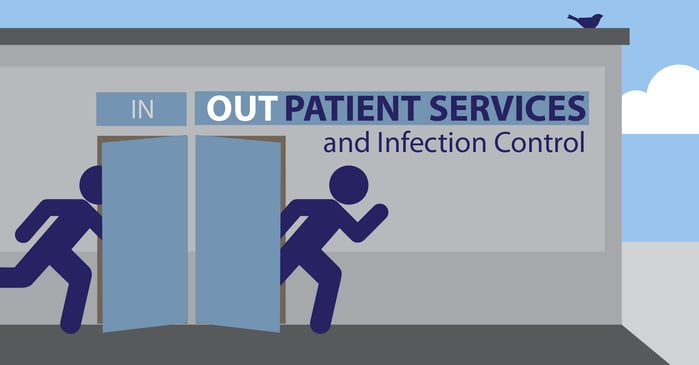Outpatient Services and Infection Prevention: Tracking Infections [Part 4]
![Outpatient Services and Infection Prevention: Tracking Infections [Part 4]](https://blog.eoscu.com/hs-fs/hubfs/Small_Blog_Headers/Outpatient_Services-01.jpg?width=950&name=Outpatient_Services-01.jpg)

So far in our series on infection control in ambulatory care settings, we covered the types of facilities and how they are regulated. One huge topic to cover is the impact of the outpatient setting on the ability to track infections. Today’s post will begin to explore this topic, and our final post will present what we can do, both individually and collectively, to begin to improve infection prevention in these facilities.
As we’ve covered before, there is no federally-mandated data collection for infections at ambulatory care settings. Mandated reporting at all ASC is up to individual states, and so far, only 7 require that this information be collected. Because there is no standardized collection of infection data, it is difficult to track the occurrence and prevalence of healthcare-acquired infections in a systematic way.
Patients only stay at an outpatient facility for a short time, making the collection of infection data difficult. Surgical site infections can take up to 30 days to become a problem, but follow-up by the outpatient facility is usually only after 24 hours, with any further follow-up taking place at the primary care physician’s office. Any infections that appear later would be noted in the patient’s file, but that information would remain at the doctor’s office, not reported to any agency. Patterns in infection cannot be easily detected during follow-up visits if there is no formal, mandated reporting protocol. Only when those patients end up in a hospital, and if outbreak patterns are detected, reported, and investigated, are those infections traced back to their point of origin.
Even if an infection is treated at a hospital, the connection between that infection and the ambulatory care facility may never be recorded or reported.
Take for example the case of a gastroenterologist who noticed first one unusual case of acute Hepatitis C in his practice, followed closely by a second. While he was able to identify that both patients had undergone a colonoscopy during the incubation period, he did not report this pattern. There were several more cases of acute HCV before a report was made, and an ensuing investigation revealed that the clinic’s anesthesiologist was reusing syringes between patients. An earlier, mandated, report could have prevented further patient harm.
In a particularly grisly outbreak , a number of cases of severe sepsis (and one fatality) were reported to a state department of health and found to be linked to a cosmetic surgery chain. An investigation revealed visibly dirty equipment, severe lapses in equipment maintenance, and improper hygiene practices. The facility was unlicensed, unaccredited, did not accept health insurance (so had no oversight from the insurance company), and the physician was not a board-certified surgeon. The cosmetic surgery facility did not have to track or report infections, and did not even have to meet state or federal regulations. The conditions at these facilities was brought to light only because such a severe outbreak was detected by a hospital.
State health departments are prepared to investigate and respond to outbreaks, and this authority helps protect patient lives. However, this authority must be supported by laws, procedures, and responsibilities as well as by the resources (financial and personnel) required to enforce it. The number of people who turn to outpatient services makes regulation of these facilities a priority.
Our next post will explore how you can make a difference in the outpatient services provided in your area, both as a patient advocate and as a citizen!
Read the Full Series
|
|
| Part 1: What are Outpatient Services? | Part 4: Tracking Infections |
| Part 2: What is Ambulatory Care? | Part 5: Room for Improvement |
| Part 3: Outbreaks & Reporting | |
Editor's Note: This post was originally published in March 2016 and has been updated for freshness, accuracy and comprehensiveness.
![EOScu Logo - Dark - Outlined [07182023]-01](https://blog.eoscu.com/hubfs/Eoscu_June2024/Images/EOScu%20Logo%20-%20Dark%20-%20Outlined%20%5B07182023%5D-01.svg)

![Outpatient Services and Infection Control: Moving Forward [Part 5]](https://blog.eoscu.com/hs-fs/hubfs/Small_Blog_Headers/Outpatient_Services-01.jpg?height=500&name=Outpatient_Services-01.jpg)
